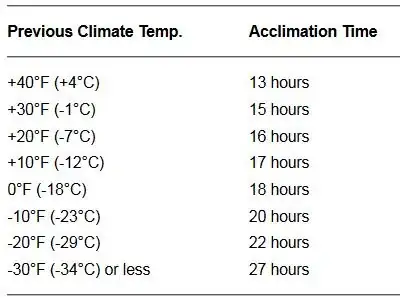Condensation is a real danger for hard disks.
You can see in a real-life youtube demonstration of a data-recovery
specialist, what a hard disk looks like when taken out of the freezer and briefly turned on, just full of scratches :

Such scratches could possibly damage the disk to a point that even a data-recovery
specialist will be unable to recover the data.
A Control Data (later Seagate) factory packaging manual for hard disks says:
If you have just received or removed this unit from a climate with
temperatures at or below 50°F (10°C) do not open this container until
the following conditions are met, otherwise condensation could occur
and damage to the device and/or media may result. Place this package
in the operating environment for the time duration according to the
temperature chart.

It seems that dangerously low temperatures start when the computer is brought
from below 50°F (10°C) into room-temperature, and it may need several hours for
acclimatization.
This long time is explained by the fact that in a mechanical disk, the head is
supported by airflow entering through special air-intakes.
These intakes are heavily filtered against dust, but not against humidity.
They are also small enough, which slows the evaporation process of internal
humidity.
You could possibly minimize the acclimatization time by wrapping the disk
in watertight plastic while it is acclimatizing,
to reduce the humidity that would enter via the air-intakes.
You should allow for some drying-off time after unwrapping the disk, for the humidity
in the air already contained inside the disk.
This is not the only danger, as explained by data-recovery specialist
ReWave Recovery :
A hard drive is at risk for sudden temperature changes including
overheating and condensation.
A sudden change in temperature that causes condensation inside the
hard drive can cause the material on the platter to evaporate which
causes the read/write heads to stick to the platter and stop it from
rotating.
Overheating can also be an issue. Overheating can cause the platters
to expand which makes the read/write heads travel farther to read the
data. The expansion of platters can cause friction which can lead to a
head crash.

